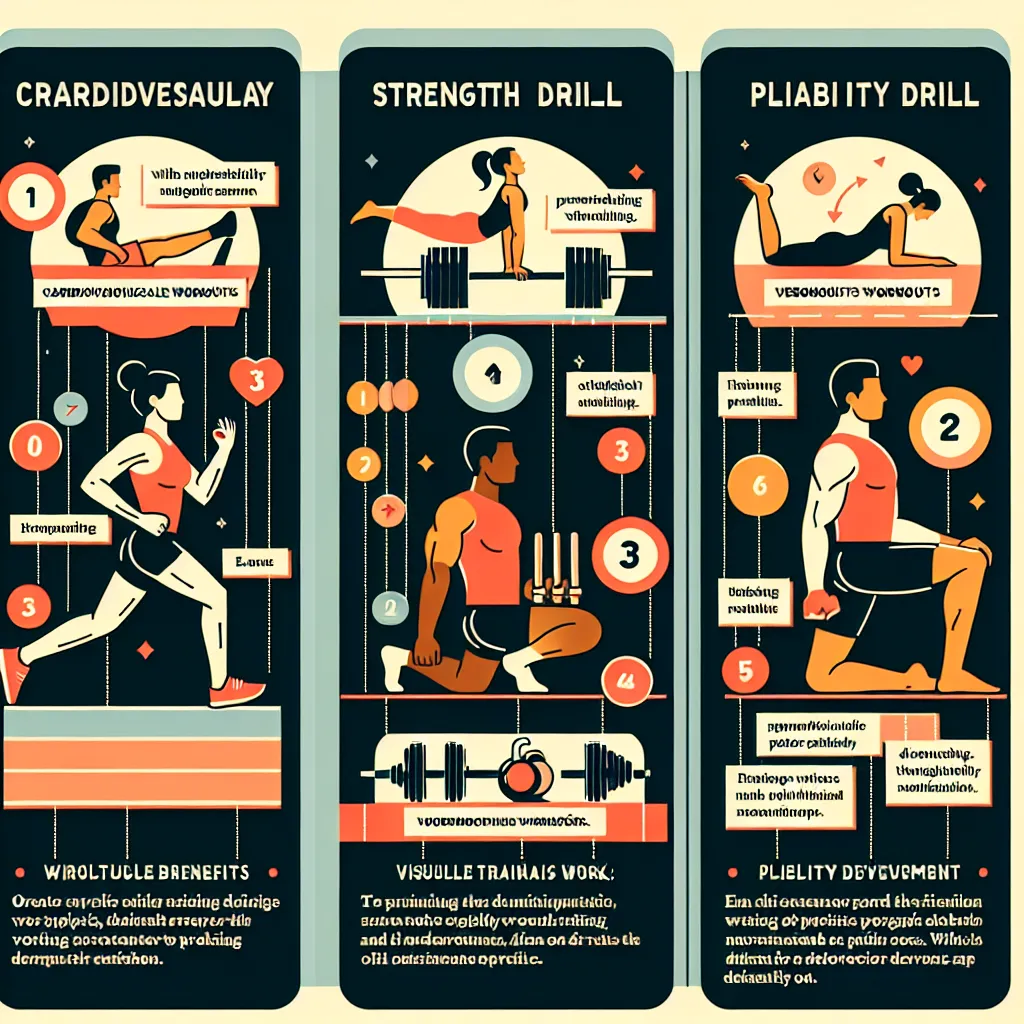The IELTS Reading section is a crucial component of the test, requiring candidates to demonstrate their ability to comprehend complex texts and answer various question types. Today, we’ll focus on a topic that has been increasingly popular in recent years and may well appear in future IELTS exams: “How to Start a Fitness Routine.”
Based on internet search trends and the growing emphasis on health and wellness, this topic has gained significant traction. Its relevance to everyday life and its potential to appear in academic or general texts makes it a prime candidate for IELTS Reading passages. Let’s dive into a practice exercise that will not only help you prepare for the IELTS Reading section but also provide valuable information on starting a fitness routine.
Practice Reading Passage
Embarking on Your Fitness Journey
Starting a fitness routine can be a daunting task, especially for those new to exercise or returning after a long break. However, with the right approach and mindset, anyone can successfully incorporate regular physical activity into their daily life. This guide will walk you through the essential steps to begin your fitness journey, ensuring you start on the right foot and maintain your momentum.
The first step in starting a fitness routine is to assess your current fitness level. This self-evaluation helps you set realistic goals and choose appropriate exercises. Consider factors such as your cardiovascular endurance, strength, flexibility, and any existing health conditions or injuries. If you’re unsure about your fitness level or have any health concerns, it’s wise to consult with a healthcare professional before beginning a new exercise regimen.
Once you’ve assessed your fitness level, it’s time to set clear, achievable goals. These goals should be specific, measurable, attainable, relevant, and time-bound (SMART). For example, instead of a vague goal like “get fit,” you might aim to “run a 5K race in three months” or “do 10 push-ups without stopping by the end of the month.” Having concrete goals gives you something to work towards and helps maintain motivation.
Choosing the right types of exercises is crucial for a well-rounded fitness routine. A balanced program should include cardiovascular exercise, strength training, and flexibility work. Cardiovascular activities like brisk walking, jogging, cycling, or swimming improve heart health and burn calories. Strength training, using bodyweight exercises, resistance bands, or weights, builds muscle and boosts metabolism. Flexibility exercises such as yoga or simple stretching routines improve range of motion and reduce the risk of injury.
 Components of a Fitness Routine
Components of a Fitness Routine
When starting out, it’s important to begin slowly and gradually increase the intensity and duration of your workouts. This approach helps prevent burnout and reduces the risk of injury. A good rule of thumb is to start with 10-15 minutes of exercise, three times a week, and slowly work your way up to 30 minutes or more, five days a week. Remember, consistency is key – it’s better to do shorter, regular workouts than to overexert yourself sporadically.
Creating a schedule is an effective way to stay committed to your new routine. Choose specific days and times for your workouts and treat them as important appointments. Consider your daily routine and energy levels when planning – some people prefer morning workouts to start their day energized, while others find evening exercise helps them unwind after work.
Proper nutrition plays a vital role in supporting your fitness goals. Ensure you’re fueling your body with a balanced diet rich in lean proteins, complex carbohydrates, healthy fats, and plenty of fruits and vegetables. Stay hydrated by drinking water throughout the day, especially before, during, and after workouts. If you’re unsure about your nutritional needs, consider consulting a registered dietitian for personalized advice.
Tracking your progress is essential for staying motivated and adjusting your routine as needed. Keep a workout log to record your exercises, sets, reps, and how you feel after each session. Many fitness tracking apps can help you monitor your workouts, nutrition, and overall progress. Regularly reviewing your log can help you identify improvements and areas that need more attention.
Lastly, don’t forget to make your fitness routine enjoyable. Choose activities you genuinely like – if you dread your workouts, you’re less likely to stick with them. Experiment with different types of exercise until you find what resonates with you. Consider joining group fitness classes, finding a workout buddy, or trying outdoor activities to add variety and social interaction to your routine.
Remember, starting a fitness routine is a journey, not a destination. Be patient with yourself, celebrate small victories, and don’t get discouraged by setbacks. With consistency and perseverance, you’ll soon find yourself reaping the numerous physical and mental health benefits of regular exercise.
Practice Questions
Now, let’s test your comprehension of the passage with some IELTS-style questions.
True/False/Not Given
- Consulting a healthcare professional is recommended for everyone before starting a new fitness routine.
- SMART goals are more effective than general fitness goals.
- Cardiovascular exercises are more important than strength training.
- It’s better to do short, regular workouts than longer, sporadic ones when starting a fitness routine.
- Morning workouts are universally better than evening workouts.
Multiple Choice
-
According to the passage, which of the following is NOT mentioned as a component of a well-rounded fitness routine?
A) Cardiovascular exercise
B) Strength training
C) High-intensity interval training
D) Flexibility work -
The passage suggests that when starting a fitness routine, you should:
A) Immediately aim for 30-minute workouts, five days a week
B) Start with 10-15 minute workouts, three times a week
C) Exercise for as long as possible each session
D) Focus solely on cardiovascular exercises
Matching Headings
Match the following headings to the correct paragraphs in the passage. There are more headings than paragraphs, so you will not use all of them.
- Paragraph 2 (beginning with “The first step…”)
- Paragraph 5 (beginning with “When starting out…”)
- Paragraph 8 (beginning with “Tracking your progress…”)
Headings:
A) The Importance of Gradual Progress
B) Setting Realistic Fitness Goals
C) Assessing Your Starting Point
D) The Role of Proper Nutrition
E) Monitoring and Adjusting Your Routine
F) Choosing the Right Exercises
Short Answer Questions
Answer the following questions using NO MORE THAN THREE WORDS from the passage for each answer.
- What type of goals should be set when starting a fitness routine?
- How often should a beginner aim to exercise per week when first starting out?
- What should you treat your scheduled workout times as?
Answer Key and Explanations
-
Not Given – The passage recommends consulting a healthcare professional if you’re unsure about your fitness level or have health concerns, but it doesn’t state this is necessary for everyone.
-
True – The passage states that having concrete goals (SMART goals) gives you something to work towards and helps maintain motivation.
-
False – The passage emphasizes a balanced program including cardiovascular exercise, strength training, and flexibility work, without prioritizing one over the others.
-
True – The passage explicitly states, “it’s better to do shorter, regular workouts than to overexert yourself sporadically.”
-
Not Given – The passage mentions that some people prefer morning workouts while others prefer evening workouts, but doesn’t state that one is universally better.
-
C – High-intensity interval training is not mentioned in the passage as a component of a well-rounded fitness routine.
-
B – The passage states, “A good rule of thumb is to start with 10-15 minutes of exercise, three times a week.”
-
C – This paragraph discusses assessing your current fitness level as the first step.
-
A – This paragraph emphasizes the importance of starting slowly and gradually increasing intensity and duration.
-
E – This paragraph discusses the importance of tracking progress and adjusting your routine as needed.
-
SMART goals
-
Three times
-
Important appointments
Common Mistakes to Avoid
When answering IELTS Reading questions like these, be aware of these common pitfalls:
- Overthinking: Don’t read too much into the questions. Stick to what’s explicitly stated in the passage.
- Ignoring qualifiers: Words like “some,” “may,” or “can” are important. They can change the meaning of a statement.
- Falling for distractors: In multiple-choice questions, some options may be partially correct but not the best answer.
- Time management: Don’t spend too much time on difficult questions. If you’re stuck, move on and come back later if time allows.
Vocabulary Focus
Here are some key vocabulary items from the passage:
- Daunting (adjective) – /ˈdɔːntɪŋ/ – seeming difficult to deal with in anticipation; intimidating
- Endurance (noun) – /ɪnˈdjʊərəns/ – the ability to endure an unpleasant or difficult process or situation without giving way
- Attainable (adjective) – /əˈteɪnəbl/ – able to be achieved
- Sporadic (adjective) – /spəˈrædɪk/ – occurring at irregular intervals or only in a few places; scattered or isolated
- Perseverance (noun) – /ˌpɜːsɪˈvɪərəns/ – persistence in doing something despite difficulty or delay in achieving success
Grammar Spotlight
Pay attention to the use of modal verbs in the passage, such as “should,” “can,” and “might.” These verbs are used to express levels of certainty, necessity, or advice. For example:
- “These goals should be specific, measurable, attainable, relevant, and time-bound.”
- “You might aim to ‘run a 5K race in three months’…”
Modal verbs can change the tone and meaning of a sentence, so it’s important to understand their usage in IELTS Reading passages.
Tips for IELTS Reading Success
- Practice active reading: Engage with the text by highlighting key points and making mental summaries as you read.
- Improve your vocabulary: Regularly learn new words and their contextual usage to enhance your comprehension.
- Time management: Allocate your time wisely across all sections of the Reading test.
- Read diverse materials: Expose yourself to various topics and writing styles to prepare for the unpredictability of IELTS passages.
- Focus on keywords: Identify key terms in questions to quickly locate relevant information in the passage.
- Practice, practice, practice: Regularly attempt IELTS-style reading exercises to familiarize yourself with question types and improve your speed.
Remember, success in IELTS Reading comes with consistent practice and a strategic approach. By applying these tips and regularly engaging with English texts, you’ll be well-prepared to tackle any Reading passage that comes your way on test day.


